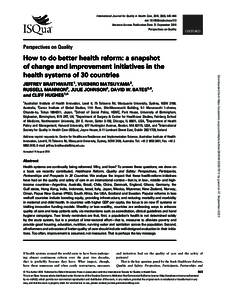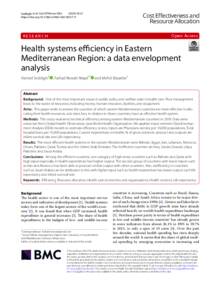Document
How to do better health reform : a snapshot of change and improvement initiatives in the health systems of 30 countries.
Identifier
DOI: 10.1093/intqhc/mzw113
Contributors
Matsuyama, Yukihiro., Author
Mannion, Russell., Author
Johnson, Julie., Author
Bates, David W., Author
Hughes, Cliff., Author
Publisher
Oxford University Press.
Gregorian
2016-09
Language
English
English abstract
Health systems are continually being reformed. Why, and how? To answer these questions, we draw on a book we recently contributed, Healthcare Reform, Quality and Safety: Perspectives, Participants, Partnerships and Prospects in 30 Countries. We analyse the impact that these health-reform initiatives have had on the quality and safety of care in an international context-that is, in low-, middle- and highincome countries-Argentina, Australia, Brazil, Chile, China, Denmark, England, Ghana, Germany, the Gulf states, Hong Kong, India, Indonesia, Israel, Italy, Japan, Mexico, Myanmar, New Zealand, Norway, Oman, Papua New Guinea (PNG), South Africa, the USA, Scotland and Sweden. Popular reforms in less well-off countries include boosting equity, providing infrastructure, and reducing mortality and morbidity in maternal and child health. In countries with higher GDP per capita, the focus is on new IT systems or trialling innovative funding models. Wealthy or less wealthy, countries are embracing ways to enhance quality of care and keep patients safe, via mechanisms such as accreditation, clinical guidelines and hand hygiene campaigns. Two timely reminders are that, first, a population's health is not determined solely by the acute system, but is a product of inter-sectoral effort-that is, measures to alleviate poverty and provide good housing, education, nutrition, running water and sanitation across the population. Second, all reformers and advocates of better-quality of care should include well-designed evaluation in their initiatives. Too often, improvement is assumed, not measured. That is perhaps the key message.
Member of
ISSN
1353-4505
Resource URL
Category
Journal articles


